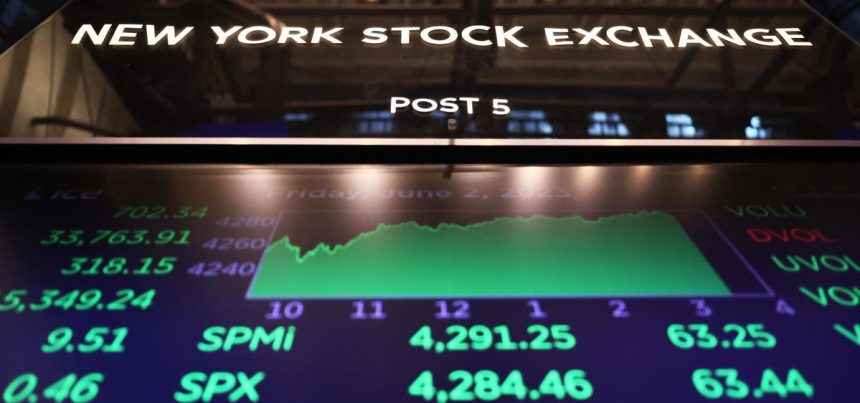It’s earnings season — the shareholder’s version of report card day. By and large, it seems like companies are doing well. We managed to fend off a recession and businesses ran tighter ships, resulting in better earnings — some exceptional. Yet, even with this great overall picture, there’s more to the story. Many companies that are churning profit are still valued lower than some of their peers.
Because now, more than ever, investors are looking beyond earnings to whether your business has a future. Consider McDonald’s, which reported a 14% growth in profit over last year. They’re doing really well! But then there’s Shake Shack – trading at a market cap around 42x earnings while McDonald’s trades at 16x earnings.
Unfortunately, this is the thing that most savvy investors obsess over but many business managers forget to pay attention to. Although revenue and earnings are a great reflection of current performance, it’s the multiples that often reflect a company’s true prospects for growth.
So, yes, McDonald’s is doing great. But with a McDonald’s on every corner and its bloated menu falling out of favor with customers, how much more can it grow? At around 400 locations to McDonald’s 40,000, and marketing and menus that appeal to a demographic of younger, more affluent customers, Shake Shack looks like it has more room to grow.
Does that mean if you’re already a bigger, more mature company that you’ll always have a lower multiple? No. What matters more is whether a company is built for the major shifts — even those not yet identified — that will happen over the next 5-10 years. Companies are rewarded based on how future-focused they are.
You Can’t Predict the Future, but You Can Get Ready for It
Let’s compare two automotive juggernauts: Ford and Tesla. Ford enjoyed solid profits in Q2 selling a lot of gas-powered pickup trucks. But Ford’s price to earnings ratio of 12 is dwarfed by Tesla’s famously high 70.
The consensus is that gas-powered pickup trucks aren’t the future. Ultimately, people think that Tesla, having gone all-in on electrification and other pioneering technologies, is on the right side of history. And the market doesn’t believe Ford will catch up, at least not fast enough.
To be sure, the market isn’t always right. We’ve enjoyed a colorful history of getting into a mob mentality and creating stock market bubbles. It’s impossible to predict the future.
However, what you can do is pay attention to the 3 kinds of major shifts that your business will need to navigate: cultural, technological, and market. You have to be future-focused.
Culture Shifts: Lessons from Mattel’s Barbie Playbook
Ignore cultural shifts at your peril.
In an era when consumers aren’t just buying things but buying into things, companies can’t simply sell stuff. They need to decide what’s important to their purpose and take a stand.
This summer’s $1 billion Barbie blockbuster is a great example of a company adapting to cultural change. Mattel took the calculated risk of backing a movie that pokes fun at the toy giant and turns its hopelessly retrograde doll into a postmodern feminist icon while also reimagining norms of masculinity. It captures the zeitgeist at a time when traditional gender roles have become more fluid — and it’s given Mattel’s struggling stock new impetus as investors see a more promising future.
Cultural shifts can transform any industry. If you’re a food company today, for example, you have to be plugged into the consumer shift to healthier nutrition. It’s a big reason Campbell spent $2.7 billion this month to buy Sovos Brands, whose products like Rao’s pasta sauce appeal to a more health-conscious shopper.
Technology Shifts: Yes, AI Really Matters
No company today can have a convincing vision for the future that doesn’t account for technological change. Technology is an incredible force multiplier for productivity, efficiency, and profitability.
With generative AI, the opportunities from tech-led change have never been more apparent. Goldman Sachs has estimated that generative AI could expand S&P 500 companies’ profit margins by about 4 percentage points over a decade. Companies that can tell a compelling story about their vision for tech-led change — and then take action on it — will be rewarded with higher multiples.
Market Shifts: Transforming Business Models
Lastly, a company’s valuation is reflective of how ready it is for a future shift in market dynamics.
Online car dealer Carvana, for example, has tapped into the market’s belief that the U.S. auto market is fundamentally shifting to a direct sale model from the old franchise system. If you’d bought a dollar of its stock at the start of this year, you’d have over $7 now. The story of just how much investors believe Carvana is built for a shifting market is seen in its enterprise value to revenue ratio: it’s roughly double that of franchise-based industry peer Lithia.
The biggest challenge in all of this, of course, is to remain future-focused. And that’s extremely hard, because most leaders are present-focused. Regardless, transformative shifts will still happen. Leaders must have a clear vision for how they’ll navigate these and act now to ensure their success.
The alternative is to only focus on tightening the ship, assuming everything will be fine based on high earnings alone. Just ask Sears or Kodak how that worked out for them.
Read the full article here










